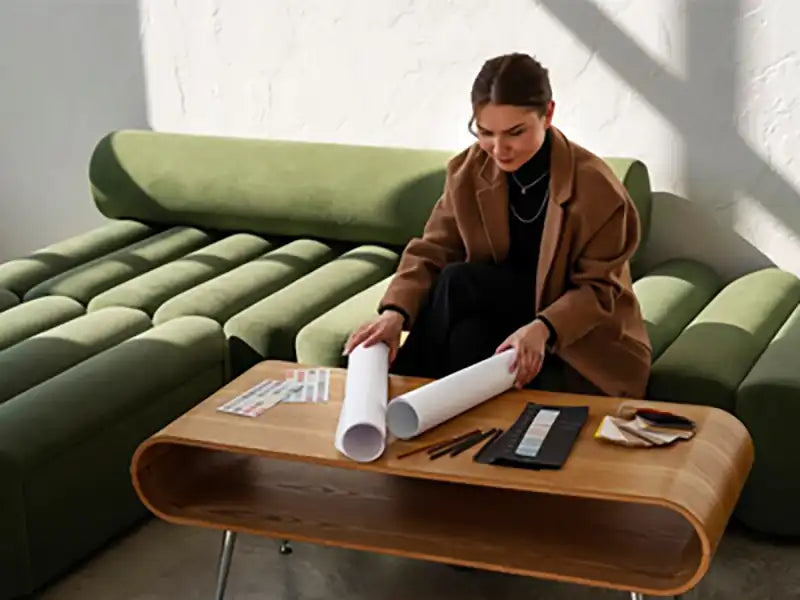The coffee table, often considered the centerpiece of a living room, plays a crucial role in defining the aesthetics and functionality of the space. One essential aspect to consider when choosing a coffee table is its height.
The standard height of a coffee table can significantly impact the comfort and style of your living area. In this article, we will explore what constitutes the standard height for coffee tables and how to select the perfect one for your home.
The Standard Coffee Table Height
The standard height for a coffee table typically falls within the range of 16 to 18 inches (40 to 46 centimeters). This height is considered optimal for several reasons:
-
Seating Compatibility: Coffee tables are usually placed in front of sofas and chairs, making it crucial that the height complements the seating. A standard coffee table height ensures that it is within easy reach, allowing you to comfortably rest your drinks, books, or snacks without straining.
-
Visual Harmony: In terms of aesthetics, a coffee table at the standard height provides a balanced look when placed alongside various seating options. It neither dominates the space nor disappears into the background.
-
Functionality: The height of a coffee table is designed for practicality. It allows for easy access to items on the table's surface and promotes a natural flow of conversation when you have guests.
Variations in Coffee Table Heights
While the standard height serves as a useful guideline, there are variations in coffee table heights to consider, depending on your specific needs and design preferences:
-
Low Profile Coffee Tables: Some modern and minimalist designs opt for lower coffee tables, often measuring around 12 to 14 inches (30 to 36 centimeters) in height. These tables can create a sleek and unobtrusive look, especially in rooms with low seating arrangements like Japanese-style interiors.
-
Adjustable Custom Coffee Tables: Adjustable coffee tables have gained popularity due to their versatility. They allow you to customise the height to suit different occasions, whether you're working on a laptop, enjoying a meal, or simply relaxing.
-
Console Tables: Occasionally, taller tables resembling console tables are used as coffee tables, measuring around 30 inches (76 centimeters) or more in height. These taller options can add a touch of elegance to formal living spaces and work well in multifunctional rooms.
Choosing the Right Coffee Table Size
Selecting the ideal coffee table height for your space involves considering various factors:
-
Seating Arrangement: Assess the height of your seating furniture, such as sofas and chairs. Ensure that the coffee table is at a comfortable level for both seated and standing guests.
-
Room Proportions: Take into account the dimensions of your living room. In larger spaces, you can experiment with different coffee table heights and shapes to create visual interest.
-
Functional Needs: Consider how you plan to use the coffee table. If it's primarily for decorative purposes, you have more flexibility in choosing unconventional heights. For functional needs like storage or workspace, standard heights are usually more practical.
-
Design Aesthetics: The style and design of your coffee table should harmonize with the overall decor of your room. The height you choose should complement the visual theme you wish to create.
The standard height for coffee tables, ranging from 16 to 18 inches, provides a versatile and functional option for most living rooms. However, there is no one-size-fits-all answer, as variations in height can suit different design preferences and functional requirements.
When selecting a coffee table, consider your seating arrangement, room proportions, functional needs, and design aesthetics to ensure that it not only fits the space but also enhances the overall ambiance of your home. Ultimately, the perfect coffee table is one that seamlessly blends style and functionality to meet your unique needs and preferences.






